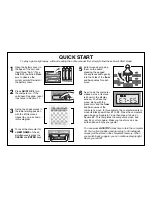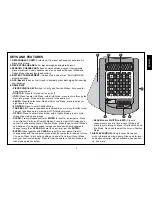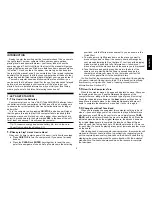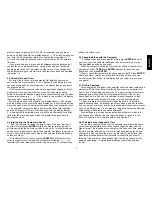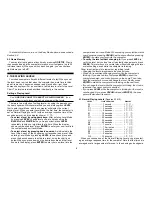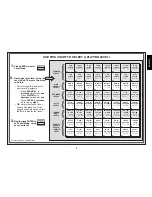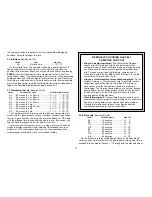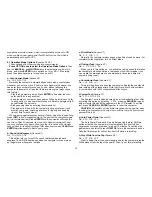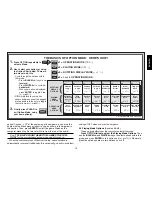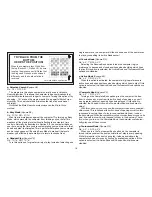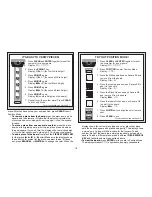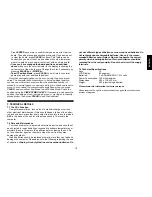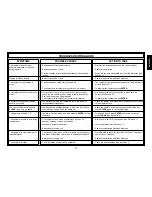
7
ENGLISH
wants to move its pawn from D7 to D5, for example, and you press
down on D7 and then D6, the display shows
Er:D5
briefly, pointing out
your error. The display then returns to showing the move again (
D7-
D5
), and the computer expects you to press down on D5 to complete
its move.
If you press down on a piece and the from square is displayed, but
you decide not to make that move, simply press down on that same
square again to cancel. Then make another move. If you change your
mind after entering your whole move, take the move back as described
in Section 1.4.
2.4 Check, Mate, and Draw
When a King is in check, the computer first displays its move as
usual. After the move is made,
CHECK
flashes in the display for a few
seconds, along with the checking move. The display then goes back to
showing the clock.
If the computer discovers a forced mate against its opponent, it first
displays its move as usual. After the move has been made on the
board, the computer flashes a mate announcement along with the move
for several seconds (e.g.,
=in 2
for a mate in two moves). The display
then goes back to showing the clock.
When a game ends in checkmate, the display flashes
MATE
(along
with the mating move or with the clock display) for a short time after the
move has been made. The display then goes back to showing the clock.
The computer recognizes draws by stalemate, three-fold repetition,
and the 50-move rule. After a draw has occurred, the display flashes
EnD
(along with the drawing move or with the clock display) for a brief
time after the move has been made. The display then goes back to
showing the clock.
2.5 Interrupting the Computer’s Search
Think the computer is taking too long to move? You can interrupt it
any time! Simply press ENTER while the computer is thinking, and it
will stop and play the best move it has found so far. This feature can be
handy on the higher levels, where the computer can take a long time to
move, and on the Infinite Level, where the computer thinks indefinitely
unless you stop it.
On the Mate Search Levels, pressing ENTER won’t force the com-
puter to make a move. Instead, the computer will display – – – – – to
indicate that it was interrupted before it found a mate. To continue play,
switch to another level.
2.6 Changing Sides with the Computer
To change sides with the computer, simply press ENTER when it’s
your turn—and the computer will make the next move for your side.
Change sides as often as you wish!
Want the computer to play the first move for White at the start of a
new game? Press CLEAR and ENTER together to reset for a new
game, and then press ENTER!
Want to watch the computer play chess against itself? Press ENTER
after each move—watch as it plays for both sides of the board, one
move after another. Study its strategies, and you might improve your
own game!
2.7 Built-In Openings
At the beginning of a game, the computer will often move instantly on
many levels. This is because it is playing from memory, using its own
built-in “book” of opening chess moves. This book contains most major
openings and many positions from grandmaster play. If the current
board position is in its book, the computer plays a response to that
position automatically, instead of having to think about the move!
A special feature of this computer’s opening book is its ability to
handle
transpositions. A transposition occurs when a position reached
by a certain set of moves can also be reached when those same moves
occur in a different order. The computer’s integrated Automatic Transpo-
sition Manager handles these cases with ease!
Also included is a unique user-selectable book feature, which lets
you choose from different types of opening books, or even turn the
book off, if desired. For complete details, see Section 5.2.
2.8 Thinking on the Opponent’s Time
As you play, you may notice that the computer sometimes replies to
your moves immediately, even in the middle of games played on the
higher levels. This is because the computer thinks on your time, using
the time you are taking for your move to think ahead and plan its own
strategies. It tries to guess the move you are likely to make, and then
calculates its responses for that particular move while you are still
thinking. If the computer has guessed right, there’s no reason for it to
keep on calculating—it immediately plays the move it has already
found!


